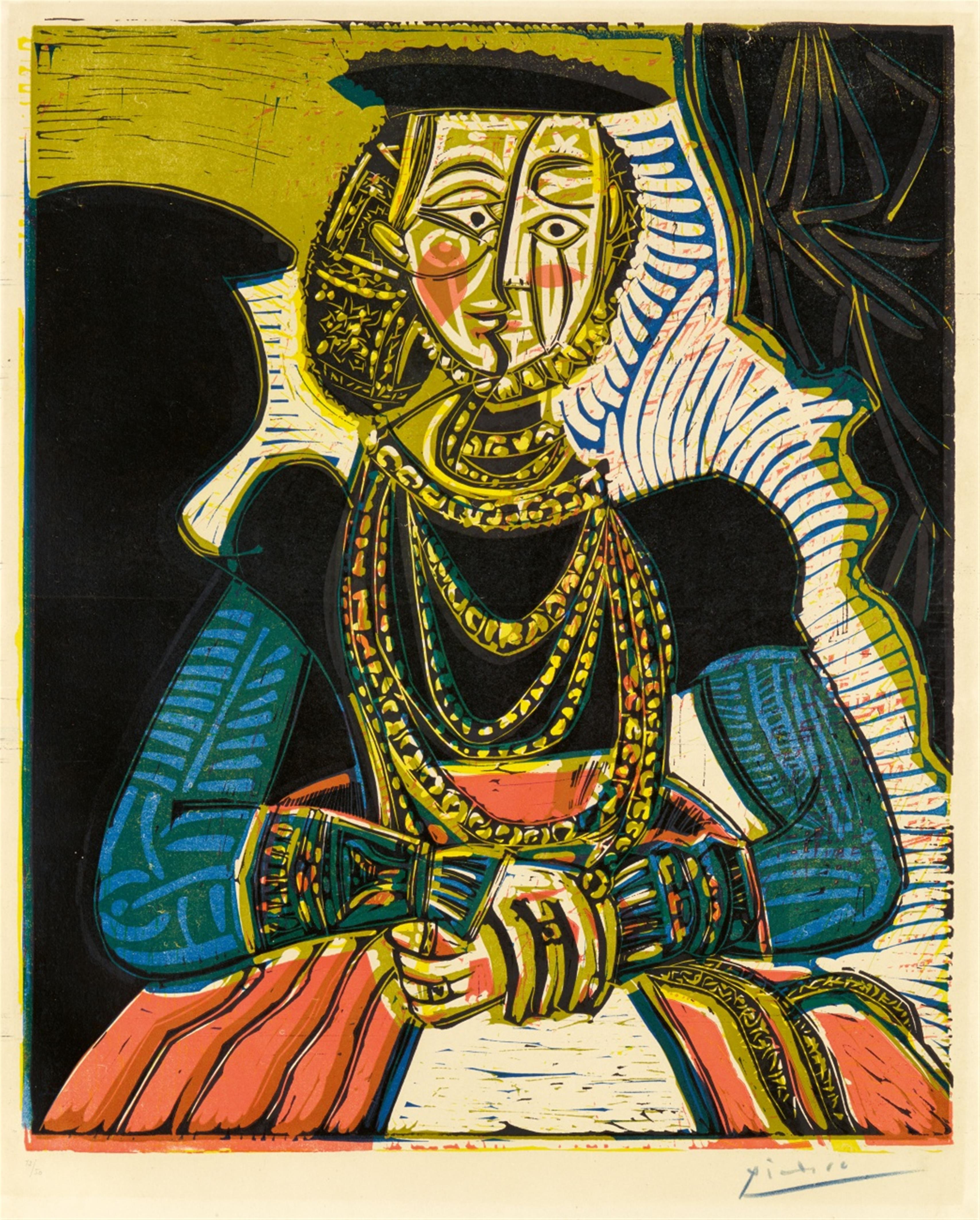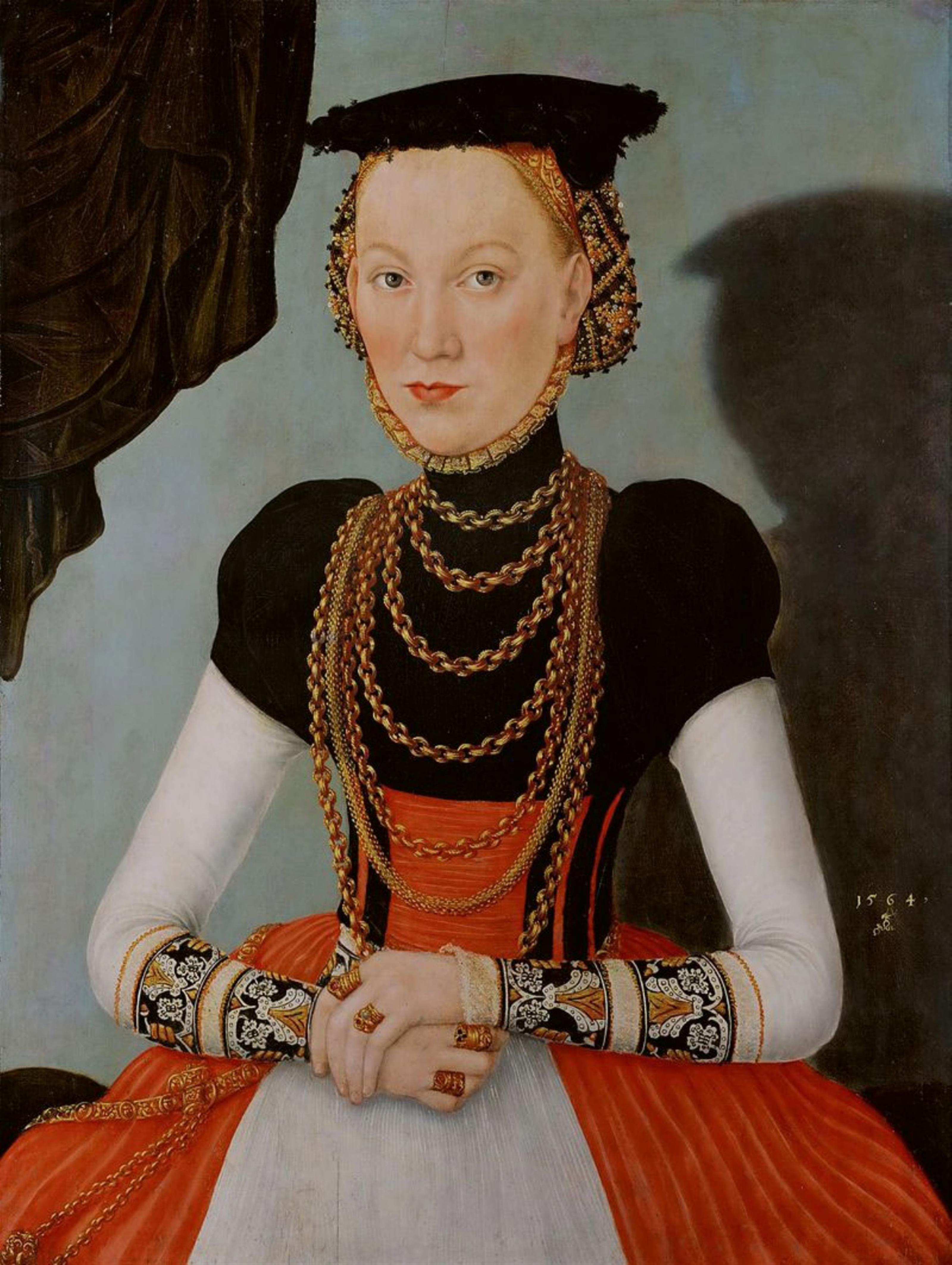Pablo Picasso
Portrait de jeune Fille, d'après Cranach le Jeune. II
1958
Colour linoleum cut on firm wove paper with watermark "ARCHES" 65 x 53.2/53.7 cm (76.1 x 57.2 cm) Framed under glass. Signed in blue chalk and numbered in pencil. Proof 12/50. Published by Galerie Louise Leiris, Paris 1958. - Slightly browned in former mat opening. Weak horizontal fold.
The large-format “Portrait de jeune fille, d'après Cranach le jeune” is Pablo Picasso's most important and most sought-after colour linocut.
In the 1950s Picasso began to occupy himself with the linocut technique, which was new to him. Linocuts would ultimately make up only a relatively small part of his printmaking oeuvre, however, the works he created with this technique between 1958 and 1963, in collaboration with the printer Hidalgo Arnéra, are among his most outstanding and technically demanding prints.
“Picasso's preoccupation with the linocut was indubitably the result of the artist's wish to, for once, assign a special role to colour in his work as a printmaker, because it had previously been granted only secondary significance - even in his lithography. When Picasso reached for the gouge, he was less interested in discovering a new world of subjects and forms than in using unfamiliar technical possibilities to assess formations that had been of use to him. In this case - as always when undertaking experiments of this kind, whether in sculpture, lithography, ceramics or aquatint - he arrived at results which cannot be compared to anything that had existed before, except for earlier creations of Picasso himself. […] Although he had previously only occasionally produced woodcuts, he quickly found his bearings after entering this new realm on the basis of a sudden resolution, and he dealt with this readily adaptable medium according to laws which he interpreted in a very liberal manner. Line- and shape-based, painterly and decorative systems are utilised and exist in interaction with the use of colours assigned to multiple printing plates or, much more frequently, a single plate used repeatedly in altered states.” (Wilhelm Boeck, in: Pablo Picasso. Linolschnitte, reprint, Stuttgart 1988, pp. V-VI.).
In the 1950s the artist often drew inspiration from important works by Old Masters, such as Cranach, Velázquez and Delacroix. He based this linocut's motif on a work by Lucas Cranach the Younger: his “Weibliches Bildnis” of 1564, which is to be found in Vienna's Kunsthistorisches Museum (see comparative illus.). Picasso's attention was drawn to this portrait through a picture postcard sent to him by his dealer Daniel-Henry Kahnweiler. He presumably found the image's juxtaposition of abstract two-dimensionality and fine ornamental detail just as fascinating as its highly expressive contours in the cast shadow and in the curtain motif of the background.
Picasso was very free in transposing the motif into a Cubist and strongly rhythmic pictorial concept and, in this way, he created a masterpiece of printmaking. Forms swing out and correspond with one another, details are developed meticulously and monolithic areas of colour establish an interplay of extreme equilibrium. The characteristic lines inserted with the energetically handled gouge and the five coloured plates printed on top of one another - with their colours superimposed in some passages - provide the foundation for the work's almost painterly quality.
Catalogue Raisonné
Bloch 859; Geiser/Baer 1053 C.a.
Provenance
Hauswedell & Nolte, Hamburg, auction 315 modern art, 1 Dec.1995, lot 545; Private collection, North Rhine-Westphalia




